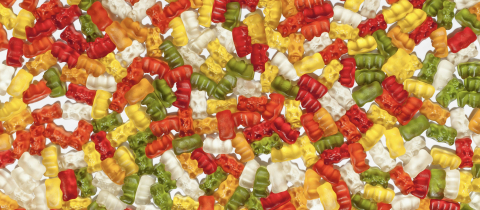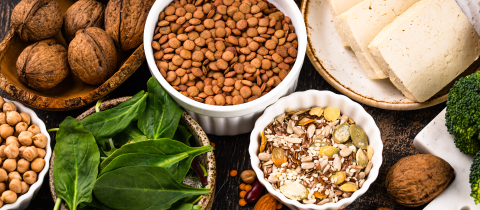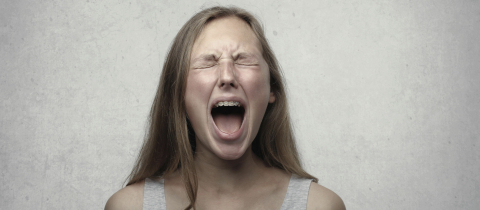The word “barbecue” derives from the ancient Caribbean tradition of supporting food over a fire with a scaffolding made from green wood which in Spanish was called "barbacoa." The technique itself was referred to as "boucan." Shipwrecked sailors and runaway servants who found themselves on Caribbean islands picked up the method and came to be called "boucaniers," or in English, "buccaneers."
As the saying goes, if you play with fire, occasionally you'll get burned. Especially if you try to rekindle smouldering charcoal with a squirt of lighter fluid. The fluid stream can catch fire and ignite the whole can, as well as its startled holder. The best way to light a charcoal fire is with an electric starter or with a newspaper tinder chimney. Real charcoal, made by heating wood in the absence of oxygen is easier to light than briquets, burns hotter, produces fewer noxious vapors and leaves less residue. Briquets are made from crushed, charred wood scraps to which fillers such as starch or coal have been added. When these are used, cooking should begin only after a uniform covering of gray ash has formed, indicating that the fillers have all burned away.
Gas barbecues burn much cleaner and hotter than charcoal. As long as sufficient oxygen is available, propane is converted mostly into carbon dioxide and water vapor. The gas flame should be mostly blue, with some yellow at the tip. Too much yellow in the flame means that there is incomplete combustion. The yellow color is due to glowing pieces of soot which form when a partially blocked gas pipe prevents proper mixing of the propane with oxygen. Soot is an intricate network of carbon atoms with a very large absorbent surface area. It can absorb some of the unhealthy components of incomplete combustion and deposit them on the food. Gas pipes should therefore be thoroughly cleaned of cobwebs and soot at the beginning of each barbecuing season.
No matter what precautions are taken, burning wood, coal, or meat will always produce some carcinogens. One of these compounds, benzopyrene, a “polyaromatic hydrocarbon” or PAH, is so carcinogenic that it is routinely used to induce cancer in animals when new cancer treatments have to be evaluated. There are several factors which govern the amount of PAHs produced during barbecuing. These are the temperature at which the food is cooked, the fuel used, and the fat content of the food. Basically, the higher the temperature, the more carcinogens form.
Mesquite is a type of wood which is favored by some outdoor chefs because it imparts a unique flavor to the food. There is, however, a price to be paid. The major component of mesquite is lignin, which burns much hotter than the cellulose that makes up the bulk of most other woods. As a consequence, the smoke produced by mesquite contains more than twice as much polyaromatics as other wood smokes.
How can we minimize our exposure to these nasty polyaromatics? Precooking meat in a microwave can minimize the time required on the grill. Barbecuing only low fat foods, such as chicken or fish also helps. Barbecue sauce, due to its high sugar content burns very easily and should therefore be put on the food only near the end of the cooking process. The further the food is from the fire, the less likely it is to be contaminated with carcinogens. In any case, if the food is too close to the fire, the outside will char quickly but the inside will remain cool. The scientific explanation for this is that the outside cooks by heat radiation but the inside cooks by conduction of heat via water. The aim therefore is to place the food far enough from the heat source so that the browning rate matches the conduction rate.
With most gas barbecues the grill is at a fixed distance from the flame and cannot be adjusted. Lowering the flame, however, accomplishes the same effect as moving the food further away. Skewering the meat on a metal rod, as in a shish kebab, can also speed up the internal cooking. This happens because the metal readily conducts heat into the food. Barbecuing with the lid down is often practiced because the food turns out to be more flavorful. Unfortunately, this is because there is more flaring up and more smoke, neither of which is desirable in terms of health. Finally, it is important that the grill be cleaned after each use of the nasty compounds that have been deposited.
Then there is the issue of bacteria. First the bad news. Meat is never free of bacteria. Salmonella, including antibiotic-resistant strains, and E. Coli 0157:H7 are the most common meat contaminants. Antibiotic resistance is a significant concern because infection by such bacteria is potentially life-threatening. Whenever antibiotics are used by meat producers, whether to treat disease in an animal or to prevent it with the use of low doses, resistance can develop. That’s because not all bacteria will be killed by the antibiotic and the naturally resistant ones will multiply and pass their resistant genes on to their offspring.
Now for the good news. Heat destroys both salmonella and E.Coli. Back to the bad news. When it comes to steaks or pieces of chicken, the bacteria are on the surface and are readily killed by heat. But with ground meat, the bacteria are distributed throughout, meaning that a burger rare on the inside may still harbour live bacteria. Ground meat has to reach 75oC for bacteria to be eliminated and only a meat thermometer can confirm that the required temperature has been reached. Colour is not an adequate indicator of being done.
With all of these concerns, why not just forget about the whole business? Because barbecued food tastes good. Specifically, it tastes good because high temperatures and smoke combine to produce very flavorful compounds. And, unfortunately, carcinogens. These can be reduced by firing up one side of the grill and cooking on the other. Or just lowering the flame.
So does all of this mean that science rains on our barbecue? No, but there may be a few sprinkles. The greatest risk probably lies in the fact that when we barbecue, we tend to overeat fatty foods. But occasional barbecuing on a clean grill is one of life's acceptable little pleasures. Just make sure the cooked food is not put back onto the same plate which was used for the raw meat! You sure don’t want a dessert of bacterial food poisoning.







